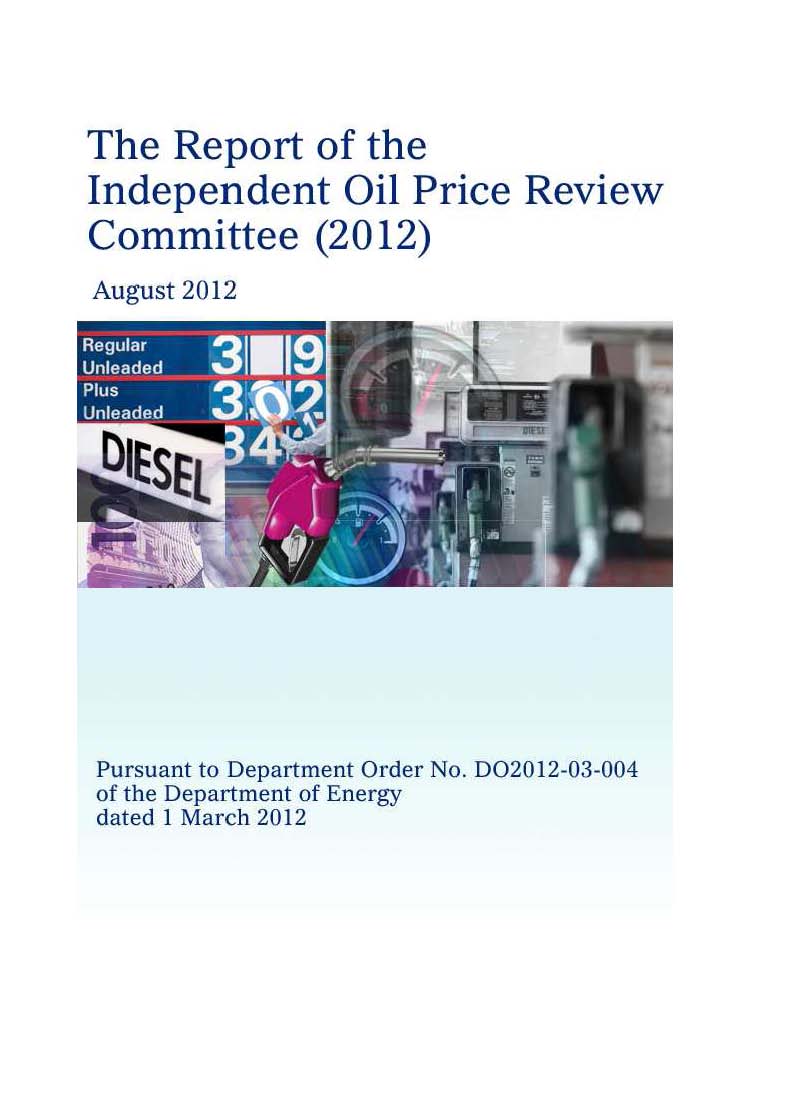
Introduction
Public clamor for greater transparency in the pricing of fuel and public perception of excessive profits by oil companies intensified in 2011 as a response to seemingly continuous increases in gasoline and diesel prices the previous two years. From 2009 to 2011, unleaded gasoline prices in Metro Manila increased from P36.16 per liter to P54.29 per liter, while diesel prices rose from P28.23 to P44.32.
To address this clamor and to give oil companies the chance to air their side, in early 2012 the DOE organized a multi-sectoral independent review committee (Independent Oil Price Review Committee - IOPRC) to look into the issue.1 The IOPRC is composed of one representative each from the following sectors: academe; business community; consumers; economists, accountants, and public transport.2 The inaugural meeting of the IOPRC was on 30 January 2012 and Department Order No. DO2012-03-0004 creating the IOPRC was issued on 1 March 2012.4
The main task of the IOPRC as delineated in its terms of reference is to determine if oil companies accumulated ‘excessive profits’ and if they were guilty of unfair pricing to the detriment of the public. Because there is no clear and legal definition of what constitute ‘excessive profits’, the IOPRC focuses instead on examining whether oil prices and the profits of oil companies can be deemed "unreasonable" The report approaches this question of reasonableness of oil prices and oil company profits in three ways.
First, regression analysis is used to check the extent to which local pump prices (more specifically unleaded gasoline 93 octane and diesel) in Metro Manila track world oil prices. In addition, the IOPRC checked how the movement of local pump prices compared to that of Thailand. Here, pump prices could be deemed "unreasonable" if they do not closely match the movement of world oil prices and if the movement of local prices are extraordinary compared to a closely situated country (i.e. Thailand). Second, the financial information of oil companies (both publicly available and those requested directly from them) were collected and project finance modelling was used to determine their rates of return.4 These were then compared to the returns in other industries as well as government bond rates. In this case, unreasonableness of profits will show in much higher returns for oil companies compared to returns in other industries and government bond rates. Third, an Excel-based predictive model named the Oil Pump Price Calculation Model (OPPC Model) of unleaded gasoline and diesel was created containing a step-bystep calculation of gasoline and diesel prices using MOPS and information on various fees and taxes on oil products. Unreasonable prices here will be manifested in much higher actual prices than those predicted by the OPPC Model.
Click to view/download the Report of the Independent Oil Price Review Committee (IOPRC)
